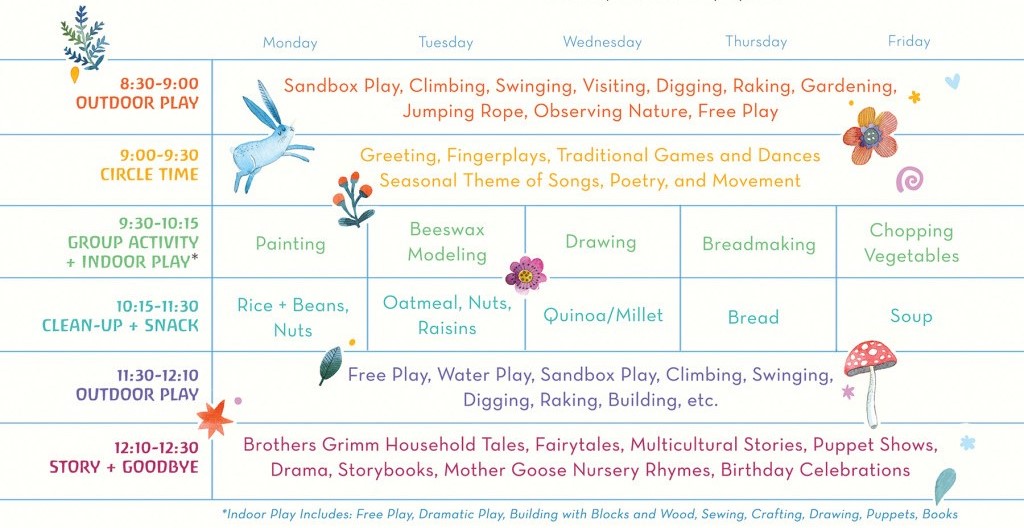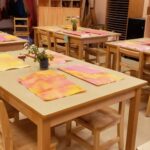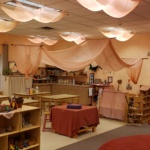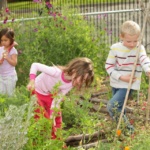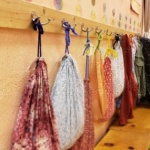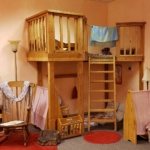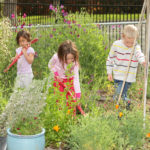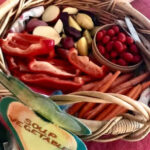Our TK & Kindergarten Program
Our TK & Kindergarten Rhythm
The rhythm of the Kindergarten day reflects the child’s need for regular cycles of activity and quiet, a sense of “breathing out” (vigorous play or work) to “breathing in” (calm moments of storytelling or painting). Each Kindergarten has its own particular daily and weekly rhythm of food and activities.
Transitional Kindergarten (TK), Kindergarten, and KinderCare
Transitional Kindergarten: Transitional Kindergarten (TK) is a California school grade that serves as a bridge between preschool and Kindergarten, to provide students with time to develop fundamental skills needed for success in a school setting that is appropriate to the student’s age and development. TK is the first year of a two-year Kindergarten experience.
Kindergarten: The Waldorf Kindergarten model traditionally encourages two years of Kindergarten (or one year of TK and one year of Kindergarten). At Blue Oak, our TK and Kindergarten-aged students learn, play, and grow together in the same classroom before moving on to the Grades. This model is developmentally based. Our half-day Kindergarten runs from 8:30AM to 12:30PM.
KinderCare: For families looking for a full-day Kindergarten experience, Blue Oak offers an extended day program from 12:30PM to 4:15PM for our TK & Kindergarten aged-students. Our KinderCare program follows a similar rhythm to the first half of the Kindergarten day and is staffed by experienced Blue Oak employees.
Age Requirements
2024-25 TK – 5th birthday is between September 2, 2024 and June 2, 2025
2025-26 TK – 4th birthday is by September 1, 2025
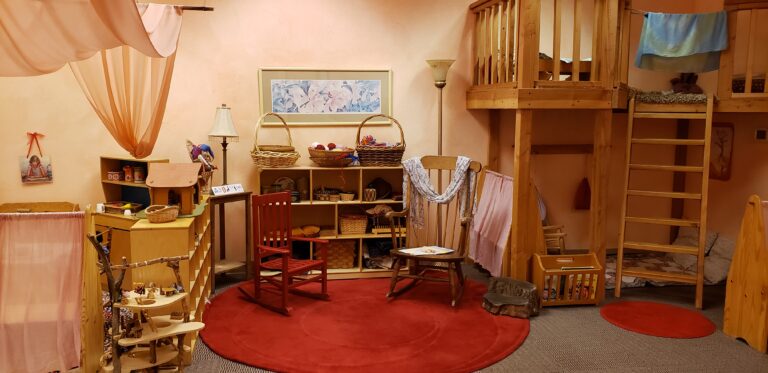
Our Kindergarten program is based on an understanding of child development in which the child between birth and age seven develops and learns through imitation and imaginative play. We strive to deliver a “classical” education that is free from the influences of popular culture. Traditional values such as veneration, meaningful work, and imaginative play are cultivated in the Kindergarten. Our teaching challenges children to develop gradually their awakening capacities to think clearly, to feel fully, and to act freely.
The children’s days are filled with both structured and unstructured activities. Bowing foremost to the power of play and the dynamic powers of imagination, the child builds the strong and sturdy foundations needed for later academic work. The Waldorf-inspired education provided by Blue Oak applies a more moderately paced approach to reading instruction and formal academics than traditional public schools. Below are some examples of what key features of the Waldorf methods that can be found in our Kindergarten classrooms.
Here are a few key features of the education methods used in a Blue Oak TK/Kindergarten classroom:
Rhythm
Just as a child lives in a rhythmical life of waking and sleeping, we also work with a regular rhythm for our daily and weekly activities including: creative play using simple wooden toys and basic play materials, music and verse accompanied by movement and gesture, nature stories and fairy tales, practical activities of gardening, baking, sewing, washing and folding, artistic activities of coloring and painting, and spending time in nature. Allowing the children’s imaginations and creativity to develop in Kindergarten creates a foundation for academics and a lifelong love of learning.
Classroom Environment
We strive to create a beautiful home-like environment worthy of imitation: a protected childhood space where the imagination and creativity of the child will flourish and where their inherent capacities are nurtured. As each day unfolds in an unhurried way through established rhythm, the children gain a sense of security and consistency. A nurturing environment of love, warmth, and harmony serves as a gentle transition between the security of home and the coming grade years.
Developing Skills
Young children are open to every impression in their environment, absorbing the world through their senses and responding in the most active mode of knowing – imitation. Storytelling, puppetry and creative play kindle the imagination and form the basic foundations for numeracy and literacy. Logic and problem-solving are developed through such activities as building with blocks, rocks and stones, and interacting with others in play. Fine motor skills and an aesthetic sense are developed through painting, drawing, beeswax modeling, seasonal crafts, and sewing.
Limited Media
Most parents are drawn to our school because of our unique pedagogy, philosophy, and shared values. The philosophy of Blue Oak School is based on an understanding of the developing child. While television and other media can serve as a source of information and entertainment for adults, children do not operate in the same developmental stage as adults. External, artificial images inhibit the viewer’s inner picture-making ability, which limits the developing capacity for our thoughts and imagination. Developing this capacity is the cornerstone of Waldorf education.
Literacy
Here, Kindergarten is a time to develop sensory integration through movement, art, music, free play and other readiness instruction. In the Kindergarten, children are building their capacities for literacy through language-rich circle activities, intentional movement, and linguistically rich storytelling. This allows for a gradual and multi-sensory preparation for reading. Direct instruction in letter/sound correspondence is brought through the images embedded in the Grimm's Fairy Tales in the First Grade. From there, Blue Oak students begin more traditional reading instruction; this gradual approach comes to full fruition by the end of Third Grade.
Seasonal Celebrations
Celebration of the seasons lies at the heart of the Kindergarten. Our celebrations focus on nature’s changing processes. The children learn songs and verses chosen for that time of year, make seasonal crafts, and bake special treats. Stories nurture a pictorial understanding of nature’s processes and speak deeply to children without our needing to explain. Blue Oak School celebrates wonderful events and festivals each year: the Harvest Festival; Lantern Walk (for the younger children through grade two); Thanksgiving; Festival of Lights; and May Day and the May Faire.
Nutrition
Food is one of the best ways we have to direct the health, behavior, and moods of our young children. In Kindergarten, the children often help prepare a wholesome and hearty snack of various grains (rice, oats, quinoa, wheat, corn); fresh, organic fruits or vegetables; cheese and/or nuts/seeds. Our mealtime together includes a blessing and table manners, and is considered a whole-group activity.
Movement
Kindergarten is a place of active work and play. We will be outside every day, rain and shine. We believe there is no such thing as “bad” weather; it is wonderful to observe and interact with nature in all kinds of weather. Active outdoor play and nature walks increase physical strength, agility, and a veneration for the natural world. A well-developed sense of our interconnectedness leads to an interest and understanding of the sciences.
Living Arts
Much learning takes place when children are invited to participate in practical and domestic activities: folding clothes, setting the table, cleaning, meal preparation, laundry, pet care, gardening, sewing, sweeping, and woodwork. The harmony of group activity is learned through circle games, singing, cleanup, and practical activities. This helps the child begin a path toward personal responsibility and respect for others.


